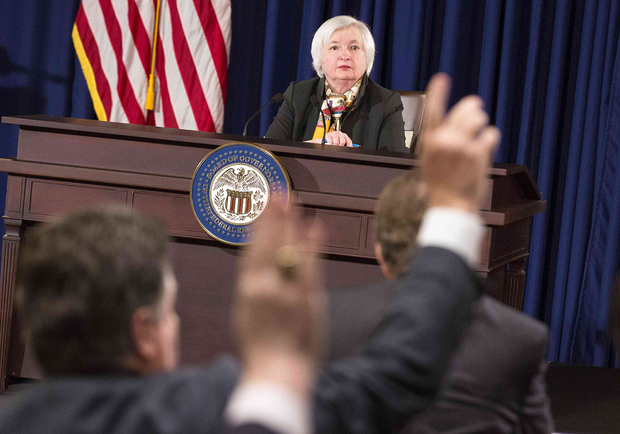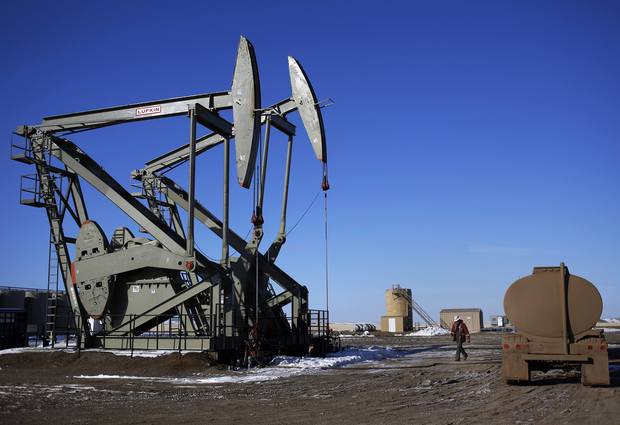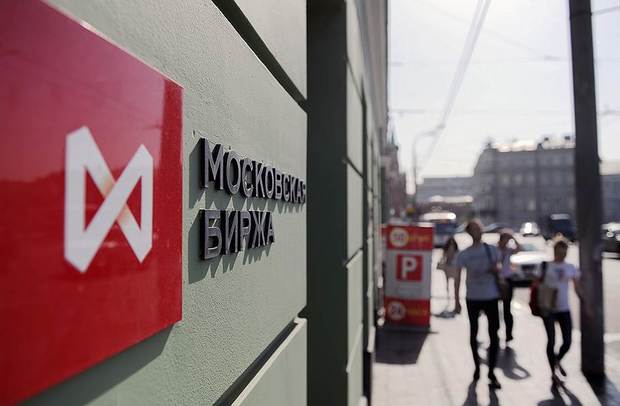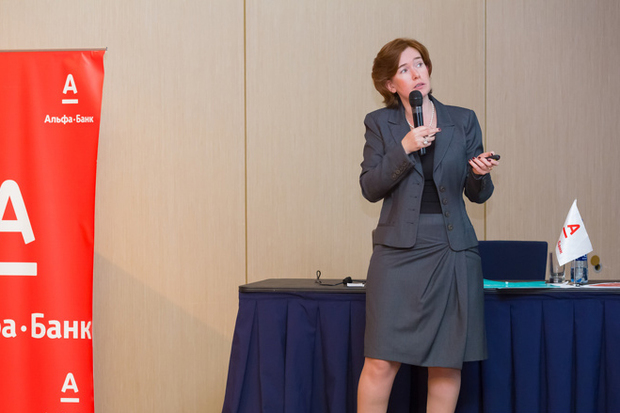Natalia Orlova: ‘Neither budgetary, nor monetary policy will be able to support economy of Russia’
Overview of the economic situation and forecast for 2016 from the chief economist of Alfa-Bank.
Although US economic indicators remain strong, it is clear that after rising of interest rates in December 2015 the Fed will prefer to take a break now, believes Natalia Orlova, the chief economist at Alfa-Bank. Iran, returning to world markets, affects the political and social processes in the region. For this reason, Saudi Arabia tries to increase oil exports. In such situation, the drop in oil prices to $ 20-25 per barrel looks like the most realistic scenario. China's slowdown remains a major threat from the East. For Russia, the significant drop in oil prices makes the economic growth impossible. The only question is the scenario: either the oil prices by the second quarter of 2016 will return to $ 40-50 per barrel, and then the fall in GDP will be limited to 1.0 %, or the oil prices will be $ 30 per barrel and then GDP will decline by 2-3%. The main reason is that neither fiscal nor monetary policy can support the growth. The only good news is the deceleration of capital outflow.
Interest rates and currencies
The beginning of the year has been marked by the fall in oil prices by 25% and a significant fall in US stock market index. The S&P 500 index lost 8% and remains under pressure until now. Indices of emerging markets are moving down after oil: MSCI EM fell by 10%. The important topic in the bond markets is a reduction in the yield of US Treasury bonds due to the next round of growth of uncertainty about the future trajectory of key rates by the Fed.
Although US economic indicators remain strong, employment creation in December was 292 000 people, far above 200 000, which was expected by the market – obviously, after rising of interest rates to 0.5 % in December 2015, the Fed will prefer to take a break now. In a situation of increasing instability of global financial markets and possible slowdown in growth of shale oil production in US, which provided up to 60 % of increase in employment in US, analysts do not expect changes in interest rates at the Fed meeting in January. In other words, possible increase will be postponed, most likely, to the second quarter.

In a situation of increasing instability of global financial markets and possible slowdown in growth of shale oil production in US, which provided up to 60 % of increase in employment in US, analysts do not expect changes in interest rates at the Fed meeting in January. In other words, possible increase will be postponed, most likely, to the second quarter. Photo: foxnews.com
A more cautious stance of the Fed is directly connected with the sharp decline in oil prices: it brings deflation in developed countries and reduces the risks of inflationary pressure. Although core CPI (excludes energy prices) in US is 2 % and is accelerating, the overall level of inflation in US now is 1.3 % and has not shown signs of acceleration yet (the inflation target of 1.7 %). Thus, while the movement of oil downward will not reach the bottom, the Fed, perhaps, will have to hold a pause. For this reason, the currency pair euro/dollar is now stabilized at levels of around $ 1.1 and movement toward parity has been postponed. Apparently, in the nearest future European currency will be more susceptible to news from Europe, in particular, the actions of the ECB. However, there is the growing role of non-economic factors: in Europe on the agenda there is the migration crisis. However, the parity of the currency pair implies either the aggressive actions of the Fed, or the deep crisis of world financial markets – neither of the scenarios seems possible at the nearest future. So, the main action will continue to be not on currency, but on the oil market.
Now, drop in the price of raw material takes place on the background of both increased supply and doubts about the prospects for demand growth. In fact, now there is no factor that could move oil prices up, only possible geopolitical conflict in the Middle East. But it is unlikely to happen, and the confrontation between Saudi Arabia and Iran reveals only through the economy. As we wrote in previous releases, the economic situation in Saudi Arabia in recent years has deteriorated, which is evident through the growth of the budget deficit to 20% of GDP and oil prices, balancing the budget, up to $ 100 per barrel. The deterioration of the financial situation of the country happens at the same time with the strengthening of Iran, which after sanctions returns on foreign markets. Allowing Iran to take advantage of high oil price would greatly increase its ability to influence political and social processes in the region. Budgetdeficit in Iran is in small, but steady decline, government debt makes up 15% of GDP, GDP growth is 1.6% in average since 2008. For this reason, now the strategy of Saudi Arabia is the maximum possible increase of oil exports, which leads to declinein oil prices.
This approach makes the prospects of the further movement of oil prices is quite unfavorable: 30% country's share in OPEC's quotas have largely deprived the market of the opportunity to count on the support from the actions of the organization, which means that the supply of oil will not decrease. The fall in oil prices to $ 20-25 per barrel looks like a realistic scenario now.
As for demand in oil, there is the principal risk factor — China,and recent statistics on the real sector do not dispel these fears. This week it became known that in the 4th quarter of 2015 the growth rate of China's GDP was 6.8 %, and growth in 2015 was 6.9 %. Although, at firstglance, these figures show only a slight deceleration in compare with previous periods, only by 0.1 percentage points, but there is a number of facts that gives concern. First of all, the fact that the slowdown takes place in the situation of risingfinancial support, including increased government spending by 30% over the past few months, monetary easingand leverage growth. In particular, in December the growth of new loans totaled record-breaking $ 260 billion, and loan growth sustained at 15%, steadily outpacing the growth of GDP.
Also, an important signal is that the slowdown comes in the situation of a managed weakening of the yuan rate. Despite the fact that the PBC admitted the fall of the yuan rate by 4.4 % in the previous year, export decreased by 2.5 % after rising in previous years, while industrial output growth slowed down to its lowest for 25 years 5.9% by December. As a result, in the market there are growing expectations of further weakening of the yuan, which find its confirmation: in the beginning of the year the PBC has made another round of easing by 1.5 %, and some of the economic advisers of the Chinese government indicate the need for devaluation by another 10-15 %. This increases the risk of capital outflow, which is already quite impressive. For 2015, the PBC reserves declined by $ 513 billion, which in the situation of surplus current account indicate a net capital outflow of about $ 850 billion (about 7.5 % of GDP). Self-fulfilling expectations of weakening yuan cause the greatest concern in this situation, that increases the nervousness of the markets (as seen by a sharp drop in Shanghai Composite index by 10% in the first days of the year), increases outflow of capital and the risks of a 'hard landing' of the economy. Even if now the view of the mild slowdown in China prevails, it does not save the oil market, which, according to the United States Department of Energy's expectations, the oversupply will increase, at least in the coming year.

'In fact, now there is no factor that could move oil prices up, only possible geopolitical conflict in the Middle East. But it is unlikely to happen, and the confrontation between Saudi Arabia and Iran reveals only through the economy.' Photo: ow.ly
Against this background, on 20-23 January in Davos the next world forum was opened. The main agenda – climate change and migration crisis, the events that are closely connected. One of the reasons for the significant influx of migrants to Europe in 2015 is considered to be the largest in the last 50 years drought in Syria and in the surrounding regions. Apaprently, global warming may lead to intensification of migration processes. The conflicts in the Middle East affected about 60 million people, which is 50% more than flows of refugees during the Second World War. The fall in oil prices may exacerbate the situation further – first, the population in oil-producing countries will become poorer, and these countries will become less stable; second, developed countries will prefer to maintain internal stability, rather than to solve external problems. Anyway, exacerbation of the situation in the economy and geopolitics creates more arguments for the segmentation of the world economy, which, in its turn, will hinder to solve the problems that require international cooperation.
Russia: second year of recession
A significant decline in oil prices has significantly worsened the mood in the Russian economy. Although, in December, in the result of rising unemployment since October 2015 and a new round of contraction in retail trade, the prospects for 2016 looked complicated, but the chances of a slight increase still remained. The fall in oil prices to 30 dollars per barrel puts an end to those hopes, and now it is clear that the second year of contraction of GDP will be impossible to avoid. The only question in the scenario: either oil prices after a weak first quarter will return to more appropriate levels of 40-50 dollars per barrel, and then the fall in GDP can be limited to 0.5-1.0 % in 2016, or in the situation of oil prices at $ 30 per barrel GDP will decline by 2-3 %.

Perhaps, in the situation of the fall in oil prices to $15-20 per barrel, the ruble can get closer to 90 rubles per dollar, however, taking into account the weakness of the final demand, it seems that the potential of pressure on the exchange rate looks limited now. Photo: kommersant.ru
The fall in oil prices had the most significant impact in several areas. First, pressure on the ruble has increased. As we expected, the fall in prices to 30 dollars per barrel brought the exchange rate to the turn of 80 rubles to the dollar, as, at the moment, the market follows oil prices based on the ratio: 1 dollar per barrel change in oil prices gives the change in the rate of 1 RUB./$. It was a surprise for some experts, who feared of a more radical devaluation, and even the market was filled with rumors that a devaluation of the exchange rate constrains the Central Bank. But, in fact, the Central Bank does not participate in the auction since autumn 2014, and the movement of the market is explained by a significant decline in the purchasing power of the ruble. Perhaps, in the situation of the fall in oil prices to $15-20 per barrel, the ruble can get closer to 90 rubles per dollar, however, taking into account the weakness of the final demand, it seems that the potential of pressure on the exchange rate looks limited now. The results of the balance of payments in 2015 show capital outflow at level of only 56.9 billion dollars, which 80% reflected payments on foreign debt, and this is good news for the ruble.
Secondly, the budget debate comes to the fore. If initially in the budget project, under conditions of oil prices $ 50 per barrel and the rate 63 rubles per dollar, it was expected that oil companies will pay in the budget 6 trillion rubles in 2016, now, with the oil prices of $ 30 per barrel and the rate of 80 rubles per dollar, the total revenues from this segment will be about 4.5 trillion rubles, in other words, budget will need 1.5 trillion rubles. As the Minister of Finance Anton Siluanov has recently reported, the Ministry of Finance will get 500 billion rubles from 10% reduction in some non-key expenditures – this will give a reduction of general budget expenditures by 3% in compare with the plan. Another part can be closed by the revaluation of the reserve fund (plus 400 billion rubles due to the devaluation of the exchange rate to 80 rubles per dollar) and additional exemptions from oil producers – although, it is an unpleasant step, but this is the only segment that at least partially benefited from the devaluation of the exchange rate. There is no doubt that the budget will be able to find money to avoid a sharp budget deficit increase, in 2016 we can't even talk about the use of countercyclical policy to support the economy, the government strictly aimed at maintaining the stability of the budget at any cost.

Thus, no matter how the situation in the second half of 2016 will go, it is clear that in the first half of the year, contraction of economic activity will be deeper than it was initially expected. Photo: Pavel Kirbyatyev (66.ru)
Third, monetary policy also does not support, and in the situation of the pressure on the ruble we can't talk about the reduction of interest rates now. According to 2015, inflation reached the level of 12.9%, and even by the end of January, probably, will be at the level of 10%, despite a significant effect of the high base. In addition, the list of inflation risks remains impressive: now to the effects of Russian sanctions against Turkey and the introduction of system Platon, the weakening of the ruble was added, the inflationary effect of which is yet to be assessed. Taking into account that the ruble fell against the dollar by 6% YTD and by 14% since the beginning of December last year, the risks of negative surprises on inflation remain. In the situation of continuing pressure on the exchange rate of the Central Bank, it would be wise to keep interest rate unchanged.
Thus, no matter how the situation in the second half of 2016 will go, it is clear that in the first half of the year, contraction of economic activity will be deeper than it was initially expected. The bottom has not been reached yet, and we can only hope that the deeper the recession will be in the coming months, the more likely the government will have to act proactively in the second half of 2016.